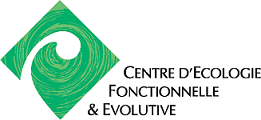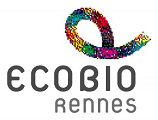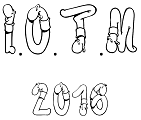7th I.O.T.M. has started !!!
32 participants from 17 countries gathered at the Paimpont's biological field station (University of Rennes 1) to explore the fabulous oligochaetes world ...
*
Oligochaeta (few-bristled worms) is an extremely important taxonomic group in aquatic and terrestrial ecosystems. The class Oligochaeta (phylum Annelida) was traditionally separated into Microdriles (small oligochaetes living in sea and fresh water and in wet soil) and Megadriles (often large oligochaetes, living mostly in terrestrial soil, a few are however semi-aquatic or aquatic). Though, one should keep in mind that nowadays Microdriles are considered as a paraphyletic assemblage whereas Megadriles are regarded as perhaps a monophyletic group.
To the layman the best known oligochaete group are earthworms that were one of the first animal group colonizing humus soils at the end of Palaeozoic (250 MYA), and Charles Darwin undeniably contributed to their fame with his famous book The Formation of Vegetable Mould through the Action of Worms with Observations on their Habits, which became a best-seller in that time. In contrast to other Oligochaeta, the important role of earthworms has been recognized from the dawn of human history till present. They were known, here and there throughout History, as source of food and medicine, important factor of soil fertility, and as a model to explain our world. Earthworms use in early medicine is documented by Pliny the Elder (77) in his Natural History and in the Chinese Divine Farmer's Materia Medica Classic (about 200 B.C. to 200 A.D., Shen, Y. 2010 in Advances of Earthworm Taxonomy IV (Annelida: Oligochaeta), page 171-174). Amazingly, the modern science re-confirmed and detailed the medical potential of earthworms (for example, Cooper, E. L., 2012. Earthworms Dilong: Ancient, Inexpensive, Noncontroversial Models May Help Clarify Approaches to Integrated Medicine Emphasizing Neuroimmune Systems in Evidence Based Complementary and Alternative Medicine. doi: 10.1155/2012/164152). Rather surprisingly, they have also been used as a model of scientific explanation of our world. For instance, Aristotle mentioned them as an example to support his - today rejected - theory of abiogenesis and believed — wrongly — that eels originated from earthworms (for details see Rota E., 2011. Early Oligochaete science; from Aristotle to Francesco Redi in Archives of Natural History 38: 136-163).
In spite of the importance of oligochaetes, there are presently some serious deficiencies in the knowledge about their taxonomy, distribution, biology and ecology, in comparison with mammals, birds, lizards and other organismal groups. One way to bridge this gap is to bring together scientists working on the subject with the aim to speed up information about the progress in their work, exchange ideas and encourage them to cooperate. This is the basic idea behind the organization of the International Oligochaeta Taxonomy Meetings (IOTM). So far,six successful meetings took place. Traditionally, the meetings concentrate mainly on Oligochaete taxonomy and phylogeny, but also discuss different aspects from other scientific fields, e.g. earthworm ecology, faunistics and phylogeography as well as new methods of their study.
The 7th International Oligochaete Taxonomy Meeting will continue in the best tradition of the previous meetings and will take place in Paimpont in France, from November 6th to 17th, 2016.
A short scientific meeting will give you the opportunity to present and discuss the results of your own research (November 7th to 9th). It will be followed by a one-day excursion at Mont St Michel, an emblematic touristic site of the region. Then, from November 11th to 13th, Samuel W. James will propose a taxonomy workshop with practical training in earthworm taxonomy, ecology and sampling. Finally, you will be allowed to participate to a three-days earthworm hunting tour in the South-Western part of France (November 14th to 17th).
You will be allowed to participate either to the scientific meeting, the taxonomy workshop or the hunting tour, or to any combination of these three activities.
We wish all participants of the 7th IOTM an informative and fruitful stay in the legendary Broceliand Forest in french Brittany.
Convenors of the 7th IOTM.




